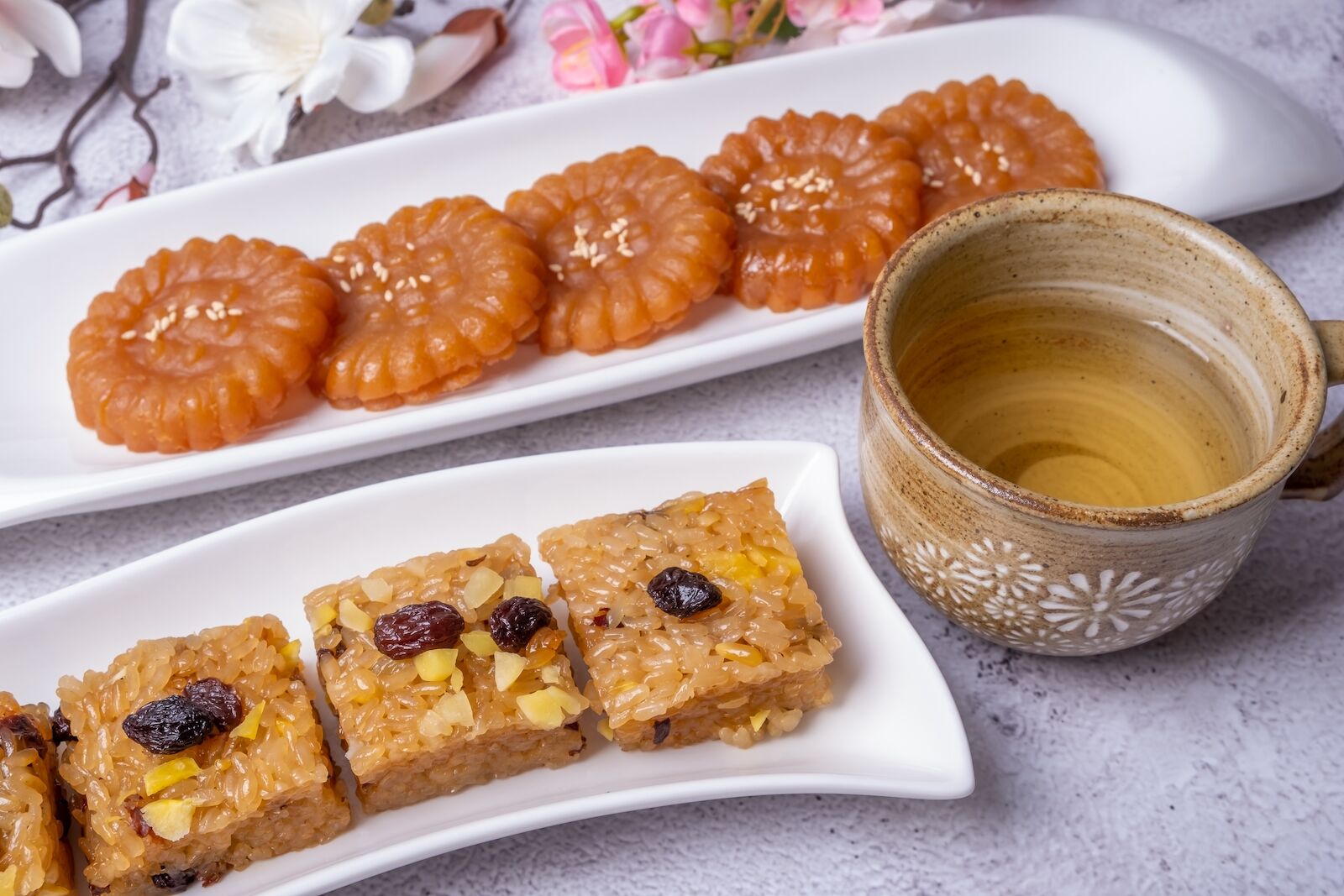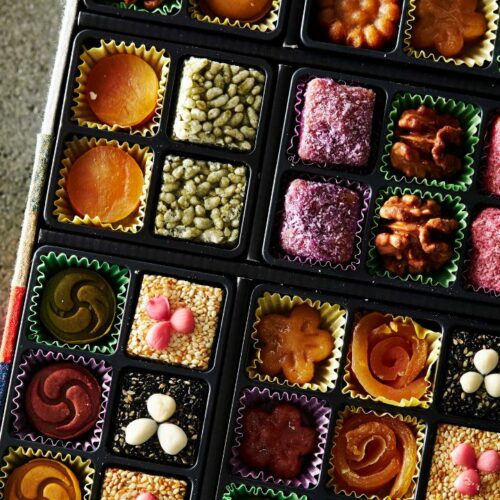Imagine this—you're walking through a bustling Korean market, the air filled with the aroma of freshly made snacks, and every stall is a treasure trove of flavors you've never experienced before. That’s what we’re diving into today, my friends: the world of Korean traditional treats. Whether you're a foodie looking for your next big adventure or just curious about what makes Korean cuisine so special, this article is your ultimate guide. So grab your chopsticks—or maybe a toothpick—and let’s get started!
From sweet to savory, Korean traditional treats are a delightful fusion of history and culture. These snacks aren’t just about taste; they’re a reflection of the country’s rich heritage. Every bite tells a story, and every story has something delicious to share. If you’ve ever wondered what makes Korean snacks so irresistible, you’re in the right place.
This article isn’t just a list of snacks, though. It’s a journey into the heart of Korean culinary traditions, packed with insights, tips, and mouthwatering details. We’ll explore the origins of these treats, how they’re made, and why they’ve become such an integral part of Korean culture. Let’s not waste any more time—let’s dig in!
Read also:Rita Stark The Rising Star In The Spotlight
Table of Contents
- The History Behind Korean Traditional Treats
- Most Popular Korean Traditional Treats
- Key Ingredients in Korean Snacks
- How These Treats Are Made
- Cultural Significance of Korean Snacks
- Health Benefits of Traditional Korean Treats
- Modern Twist on Traditional Treats
- Easy Recipes to Try at Home
- Where to Find Authentic Korean Snacks
- Wrapping It All Up
The History Behind Korean Traditional Treats
Let’s start with a little history lesson, because understanding where these treats come from adds a whole new layer of appreciation. Korean traditional snacks, or hangwa, have been around for centuries. They were originally crafted for royal banquets and special occasions, but over time, they became a staple in everyday Korean life.
In the old days, these treats were made using simple, natural ingredients like rice flour, honey, and sesame oil. The recipes were passed down through generations, and each region in Korea developed its own unique take on these snacks. Some were sweet, some were savory, but all of them were packed with flavor.
Evolution Over Time
Fast forward to today, and you’ll find that while the core recipes remain the same, modern techniques and ingredients have given these treats a fresh twist. Yet, they still retain their traditional charm. It’s this blend of old and new that makes Korean snacks so fascinating.
Most Popular Korean Traditional Treats
Now, let’s talk about the stars of the show—some of the most beloved Korean traditional treats. From the chewy to the crunchy, there’s something for everyone. Here’s a quick rundown:
- Yakgwa: These honey-glazed cookies are a classic. Made with wheat flour, honey, and sesame oil, they have a delicate sweetness that’s hard to resist.
- Bbang: Think of these as Korean-style bread rolls, often filled with red bean paste or other sweet fillings. They’re soft, fluffy, and utterly delicious.
- Gyeongdan: These rice cake balls are coated in sesame seeds or bean powder. They’re chewy on the inside and crunchy on the outside—a perfect combo.
Regional Variations
Each region in Korea has its own signature snack. For example, Jeju Island is famous for its tteok, or rice cakes, while Seoul boasts a wide variety of sweet pastries. Exploring these regional differences is like taking a culinary tour of the country.
Key Ingredients in Korean Snacks
What makes Korean traditional treats so special? The answer lies in the ingredients. These snacks are made using wholesome, natural components that not only taste great but are also good for you. Here are some of the key players:
Read also:Lauren Hammersley A Rising Star In The Spotlight
- Rice flour: The base for many Korean snacks, giving them their signature chewy texture.
- Honey and sugar: Natural sweeteners that add just the right amount of sweetness.
- Sesame oil: Adds a rich, nutty flavor to many dishes.
Why Natural Ingredients Matter
Using natural ingredients isn’t just about taste—it’s also about health. Many Korean snacks are free from artificial preservatives and additives, making them a healthier choice compared to processed snacks.
How These Treats Are Made
Making Korean traditional treats is an art form. It requires patience, skill, and a deep understanding of the ingredients. Let’s take a peek behind the scenes and see how these snacks come to life.
Most snacks begin with a dough made from rice flour or other grains. This dough is then shaped into various forms—balls, cakes, or cookies—and cooked using traditional methods like steaming or frying. The process may seem simple, but it’s the attention to detail that makes all the difference.
Traditional Techniques
Techniques like hand-rolling and hand-cutting are still used today, preserving the authenticity of these snacks. Watching a skilled craftsman at work is like watching a performance—it’s mesmerizing.
Cultural Significance of Korean Snacks
Korean traditional treats aren’t just food—they’re a part of the country’s cultural identity. They play a significant role in festivals, celebrations, and even everyday life. For example, during Chuseok, a major Korean harvest festival, families gather to make and share rice cakes as a symbol of unity and gratitude.
These snacks also reflect Korea’s values of harmony and balance. Just like the flavors in each treat, Korean culture emphasizes the importance of finding balance in life.
Celebrating Through Food
Food is a universal language, and in Korea, it’s a way of bringing people together. Sharing a plate of yakgwa or gyeongdan isn’t just about eating—it’s about creating memories and strengthening bonds.
Health Benefits of Traditional Korean Treats
Believe it or not, many Korean traditional snacks are surprisingly healthy. They’re made with whole grains, natural sweeteners, and minimal processing, making them a guilt-free indulgence.
For example, rice cakes are a great source of complex carbohydrates, while sesame seeds provide essential fatty acids and minerals. Even the red bean paste used in many snacks is packed with fiber and protein.
Snacking the Healthy Way
If you’re looking for a snack that’s both tasty and nutritious, Korean traditional treats are a great option. Just remember to enjoy them in moderation—everything in balance, right?
Modern Twist on Traditional Treats
While tradition is at the heart of Korean snacks, modern chefs are putting their own spin on these classics. From matcha-flavored yakgwa to chocolate-covered gyeongdan, there’s no shortage of innovation in the world of Korean treats.
These modern twists don’t just appeal to younger generations—they also attract international fans who are eager to try something new yet familiar.
Fusion Cuisine
Some chefs are even experimenting with fusion recipes, combining Korean ingredients with flavors from around the world. The result? A whole new category of snacks that honor the past while embracing the future.
Easy Recipes to Try at Home
Ready to try your hand at making Korean traditional treats? Here’s a simple recipe to get you started:
Homemade Yakgwa
Ingredients:
- 1 cup wheat flour
- 1/2 cup honey
- 1/4 cup sesame oil
- 1/2 cup water
Instructions:
- Mix the flour, honey, sesame oil, and water in a bowl until a dough forms.
- Roll out the dough and cut it into small pieces.
- Fry the pieces in hot oil until golden brown.
- Drain on paper towels and let cool before serving.
Where to Find Authentic Korean Snacks
If you’re not ready to make your own snacks, don’t worry—you can still enjoy authentic Korean treats. Many specialty stores and online retailers offer a wide selection of traditional snacks.
When shopping, look for brands that use traditional recipes and natural ingredients. Reading reviews and checking labels can help you find the best options.
Supporting Local Businesses
Buying from local Korean businesses not only ensures authenticity but also supports the community. It’s a win-win situation!
Wrapping It All Up
From their rich history to their delicious flavors, Korean traditional treats offer a window into the heart of Korean culture. Whether you’re a fan of sweet or savory snacks, there’s something for everyone to enjoy. So why not take a bite and see what all the fuss is about?
Don’t forget to leave a comment below and let us know which Korean treat is your favorite. And if you’ve tried making any of these snacks at home, we’d love to hear about your experience. Happy snacking, folks!


